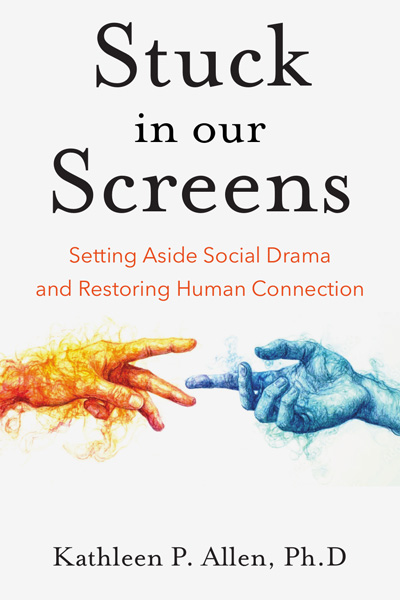
Estimated reading time: 5 minutes
Screens have a place in the modern world and family, but when it comes to child development and raising kids, the less the better
—
Some months ago when I was finishing my book, Stuck in Our Screens, I was pondering what the solutions might be to the increasing amount of screen time youth were experiencing at the same time that their overall mental health was taking a dive.
Years ago, before I went back for a PhD in human development, I had done some work for youth-serving organizations including schools on something called the 40 Developmental Assets. At that time, my own daughters were well into their teens, and I remember thinking as I was creating teaching materials for professional development of these adults, that if I had known about ‘assets’ when I was a young parent, I could have avoided all those “how to parent” books, and just focused on giving them a life full of asset-heavy moments.
So, what are “asset-heavy” moments? They are experiences, relationships, opportunities, and resources that add up to many moments of positive living that produce a child who is resilient, responsible, healthy, and happy. Based on the study of how we build such a child, the Search Institute has compiled forty examples of what assets look like. Here are some examples: Living in a loving family. Taking responsibility. Knowing how to solve conflicts peacefully. Telling the truth when it’s hard. Knowing how to set a goal and achieve it. Displaying empathy. Acquiring friendship skills. Valuing helping other people. Engaging in learning. Doing an hour of homework a night. Connecting with adults who are good role models. Feeling valued by adults. Reading three hours a week. (Does anyone read (from a book) three hours a week anymore?) Assets are cumulative. The more the better. They are needed by all children. Sadly, Search Institute has documented that many kids don’t have nearly enough.
What struck me when I revisited the list of assets, more than twenty years after my deep dive into them, was that nowhere does it mention time spent staring at a screen, playing a video game, or mindlessly scrolling on social media. Most parenting advice tells us what not to do. It was refreshing not to see an admonition for a child to become a good digital citizen. It was refreshing not to see advice to parents to keep screens away from toddlers or not give a child a smart phone before age 16. It was so obvious that the assets, clearly grounded in common sense as well as research, were something that felt almost Victorian in their simplicity and forthrightness. I was shocked at what has transpired since little kids started running around staring at a smartphone or toting an electronic tablet, all connected to the internet. I felt gut-punched.
We’ve all seen teens sitting together staring at their phones, not talking to each other. We’ve all watched people out to dinner staring at their phones, not talking to each other. Unfortunately, most of us have seen adults who are staring at their phones, while their kids also stare at their phones, not talking to each other. Talking to each other… When I was in school the teachers got mad at us for talking to each other so much. Now, instead of talking to each other, we stare at our screens. It’s a really bad way to raise kids. It’s also a really bad way to live. And if we want kids to get healthy doses of assets, we need to talk to them, and they need to talk to each other and us!
Assets tell us what to do with and for our kids. Much of it requires two hands, which means we have to put down our own cell phones. Yes, it’s fun to take pictures and show them to each other. But it should be more fun to do something with each other than to share pictures of each other. We need to ditch our screens and engage with each other in face-to-face interactions and activities.
My concern is that we are losing our humanity through our screens. We know that babies need us to see them unmediated through screens. Babies like looking at faces in the flesh. They mirror our expressions. They copy the sounds we make. They like touching our mouths and noses. They crave us. All human development takes place in relationships, not in screens, and while I love facetiming with my grandchildren, I can tell when they are more engaged by the electronic tool than they are by my wrinkled but smiling, chatting face. It works when we can’t be together, but it is not a substitute. And one thing I’ve learned over the years is that when adults engage with kids face-to-face, it’s not just good for the kids, it’s good for the adults, too. It enriches and strengthens everyone’s humanity, something we all need.
So, let’s get out of our screens. Let’s go for walks. Let’s have conversations. Let’s sing together. Let’s play board games and card games. Let’s tell stories. Let’s read out loud to each other. Let’s build things. Let’s make things. Let’s share meals without phones. Let’s create memories that become our life stories. Let’s get unstuck from our screens and be human.
You may also enjoy reading Happy Right Now: Empowering Children To Find Happiness Within, by Julie Berry.
